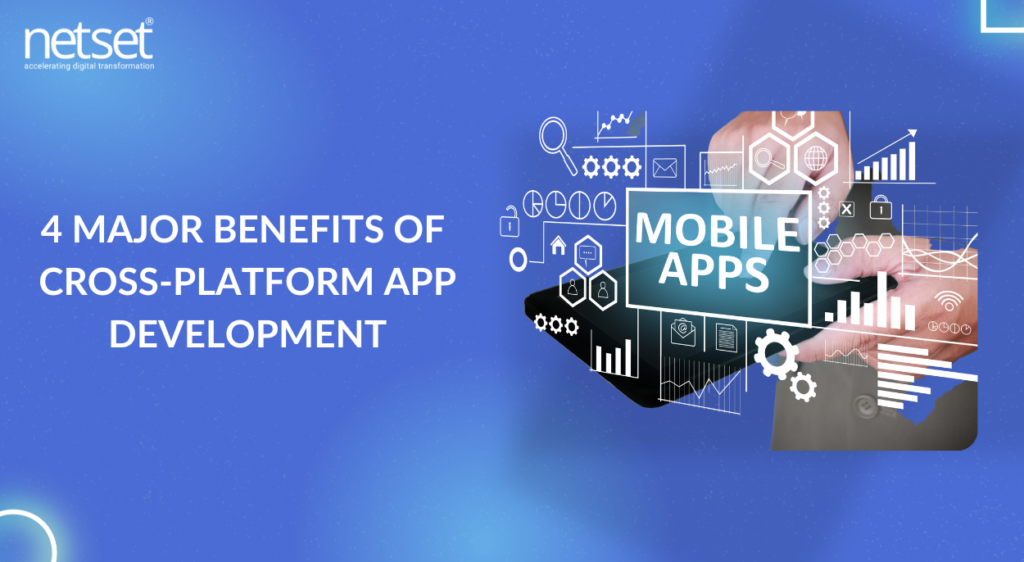In recent years, the mobile app development industry has witnessed remarkable growth, accompanied by intensifying competition among businesses. As companies seek to distinguish themselves in this competitive market, a key strategy emerges: establishing a presence on both the Google Play Store and Apple App Store.
Fortunately, the advent of cross-platform and custom mobile app development has transformed the game. Now, there’s no need to invest valuable time and resources in developing separate apps for these two major platforms. Instead, businesses can channel their efforts towards enhancing their core products or services, unburdened by the complexities of creating and maintaining separate apps for both app stores.
Let’s see what you need to understand before investing in custom app development services:
What is Cross-platform App Development?
In the world of mobile app development, there are two main players: iOS and Android. These two platforms require separate apps because they are developed using different coding languages. So, if you want your app to reach both iPhone and Android users, you’d typically have to hire mobile app developers separately to build two different apps. However, this approach comes with some drawbacks:
Costs: Building and maintaining two individual mobile apps can be quite expensive.
Skills: Developing native mobile apps for both iOS and Android means you need to know at least 2-3 different programming languages.
But here’s the good news: today, you can write apps in a universal language that works on both platforms. This concept is called ‘cross-platform development’ and has several benefits.
Cross-platform development allows one codebase to run on different platforms, like iOS and Android. Instead of writing code in separate languages for each platform, you use a single framework that provides a native-like experience through a visual interface with its design elements.
Native app development involves using specific languages like Swift and Objective-C for iOS and Java or Kotlin for Android. In contrast, a cross-platform app is written once and works similarly on both iOS and Android. The top technologies for cross-platform mobile app development are Flutter (from Google) and React Native (from Facebook). They’re known for their great performance, hot reloads, and almost native user interface design.
If you want to learn more about Flutter and React Native, check out our blog for updates. Cross-platform development can save you time, money, and resources while reaching a broader audience.

Cross-Platform Mobile App Development Benefits
In today’s fast-paced digital landscape, the advantages of cross-platform development are undeniable. Let’s delve into how these benefits can supercharge your business and deliver outstanding results.
- Code Reusability: Cross-platform development streamlines your app creation process. With a single code base, you can run your app on multiple platforms, eliminating the need to write platform-specific code. This reduces redundancy, accelerates development, and minimizes the learning curve associated with various platform-specific tools.
Furthermore, this shared code base allows you to tackle bugs and implement enhancements simultaneously across all platforms, saving valuable time and resources.
- Cost Reduction: Native development often requires assembling different teams with varying skill sets and substantial budgets to cover multiple operating systems. Cross-platform development, in contrast, enables you to leverage a shared pool of technical and human resources, resulting in significant cost savings.
With fewer team members and no need to invest heavily in training for OS-specific programming languages, your development costs can be cut in half. This approach also helps you efficiently test the market, identifying which platform yields higher adoption rates and profitability.
- Faster Development and Time-to-Market: Customers demand convenience and expect your products and services to be readily available across various channels. Cross-platform development ensures a consistent user experience, enabling you to meet these expectations.
Leveraging shared code bases and frameworks like React Native or Flutter, you can accelerate product development and launch, responding swiftly to market changes and customer feedback. This agility builds your reputation as a customer-centric business. Cross-platform apps are also easier to maintain and support, as updates and bug fixes can be synchronized across all devices, regardless of the operating system.
- Brand Consistency: Maintaining a consistent brand image is highly essential for businesses. When developing for iOS and Android separately, achieving this consistency can be time-consuming and complex.
Cross-platform app development simplifies the process by allowing you to use the same UI/UX components, providing a native app-like experience. While the navigation may differ between platforms, the overall interaction and brand image remain uniform, reflecting your business’s authenticity and reliability.
Conclusion
Cross-platform application development offers numerous advantages, such as broadened audience reach and cost savings through code reuse. Nonetheless, it’s crucial to assess the trade-offs thoroughly before embarking on such a project. Carefully weigh the pros and cons to ensure the best decision for your business, or seek expert consultation to explore the full potential of cross-platform applications.
Explore the impressive portfolio of Netset Software, a prominent leading Web3 and custom app development company. Their seasoned team not only crafts exceptional applications but also provides robust tracking capabilities to ensure your app’s uniqueness and user appeal.




